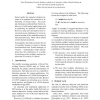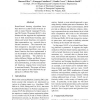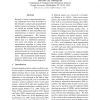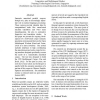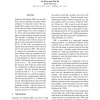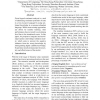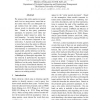ACL
2015
8 years 7 months ago
2015
Social media has attracted attention because of its potential for extraction of information of various types. For example, information collected from Twitter enables us to build u...
ACL
2015
8 years 7 months ago
2015
Automatic resolution of Crossword Puzzles (CPs) heavily depends on the quality of the answer candidate lists produced by a retrieval system for each clue of the puzzle grid. Previ...
ACL
2015
8 years 7 months ago
2015
Kernel-based learning algorithms have been shown to achieve state-of-the-art results in many Natural Language Processing (NLP) tasks. We present KELP, a Java framework that suppor...
ACL
2015
8 years 7 months ago
2015
Ezafe construction is an idiosyncratic phenomenon in the Persian language. It is a good indicator for phrase boundaries and dependency relations but mostly does not appear in the ...
ACL
2015
8 years 7 months ago
2015
Recently, a variety of representation learning approaches have been developed in the literature to induce latent generalizable features across two domains. In this paper, we exten...
ACL
2015
8 years 7 months ago
2015
Semantic annotated parallel corpora, though rare, play an increasingly important role in natural language processing. These corpora provide valuable data for computational tasks l...
ACL
2015
8 years 7 months ago
2015
Semantic role labeling (SRL) is one of the basic natural language processing (NLP) problems. To this date, most of the successful SRL systems were built on top of some form of par...
ACL
2015
8 years 7 months ago
2015
We propose an unsupervised probabilistic model for zero pronoun resolution. To our knowledge, this is the first such model that (1) is trained on zero pronouns in an unsupervised ...
ACL
2015
8 years 7 months ago
2015
Cross-lingual sentiment analysis is a task of identifying sentiment polarities of texts in a low-resource language by using sentiment knowledge in a resource-abundant language. Wh...
ACL
2015
8 years 7 months ago
2015
We propose that entity queries are generated via a two-step process: users first select entity facts that can distinguish target entities from the others; and then choose words t...
